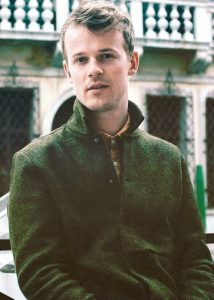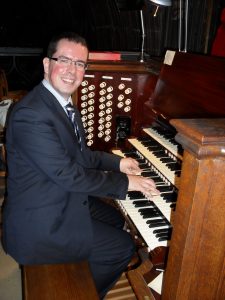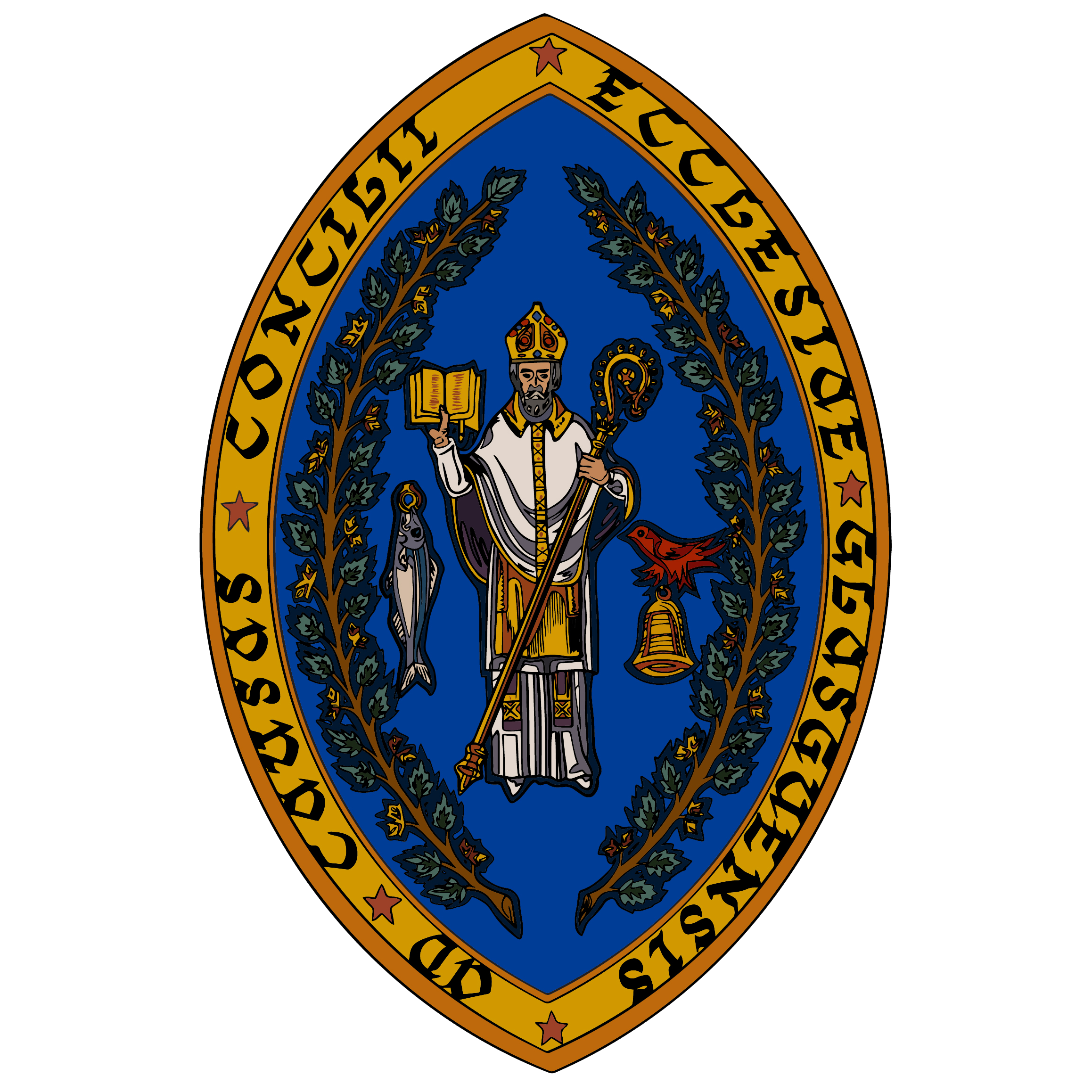
Andrew Forbes, Director of Music at Glasgow Cathedral, is an innovative Scottish organist whose dynamic style of playing creates ‘a symbiosis between artist and instrument’ (The Montrealer). His programmes often celebrate well-known masterpieces, whilst his imagination and open mind allow him to explore new possibilities for the organ—particularly in his frequent collaborations with composers, including premiere performances of music by Yves Castagnet, Jonathan Cole, Edwin Hillier, Juta Pranulytė and Roxanna Panufnik.
Appointed at Glasgow Cathedral aged 21, Andrew is a First Prize winner of the Northern Ireland International Organ Competition, a shortlisted finalist at St Albans International Organ Competition, an Associate of the Royal College of Organists, and winner of the RCS Prize for Early Music. His ability to transform the organ into ‘the most sublime of musical conduits’ (The Scotsman) sees him performing throughout Europe, with solo appearances at St Paul’s Cathedral (London), Westminster Abbey, Šv Matu International Organ Festival (Lithuania) and the Philharmonie de Paris.
Away from the organ console, Andrew is a versatile artist and enjoys a varied career across many keyboard instruments, mixing solo concerts with chamber and orchestral performances. A frequent guest player with the BBC Scottish Symphony Orchestra, he has appeared with Dunedin Consort, Scottish Chamber Orchestra, Wallace Collection, Stargaze; and choirs including SCO Chorus, NYCoS, Ayr Choral Union and Bearsden Choir. He is also in demand as a collaborative pianist, sound engineer and producer, teaches at Glasgow University and RCS, and is the Assistant Course Director of St Andrews Organ Week. Andrew directs the critically acclaimed Glasgow Cathedral Festival – described as ‘a minor miracle’ (Vox Carnyx) – with bold and often experimental programming that brings life to the city’s oldest building.
Andrew advocates for the organ through various charitable organisations: in 2023, he was invited to join the board of Scotland’s Churches Trust, where he chairs their Organ Advisory Committee; prior to this, he was a trustee of Glasgow Society of Organists for eight years, and continues as their representative to the Scottish Federation of Organists. Together with Chris Bragg and Steven McIntyre, he runs Sowne of Organe, a project surveying Scotland’s most significant (and endangered) historical organs.
Originally from Perth, Andrew studied at the Royal Conservatoire of Scotland and Glasgow University, with teachers including Eoin Bennet, Chris Bragg, Hans Fagius, William Whitehead, Jan Waterfield, and John Butt. Since 2019 he has learned with Dame Gillian Weir, supported by awards from the Hope Scott Trust and the McGlashan Charitable Trust.
Prof Malcolm Sim, Cathedral Organist

studied piano from the age of four with Pearl Gelfer and subsequently organ with John Turner and Kevin Bowyer. He took up his first church organist post at the age of fourteen.
He has been a regular contributor to the recital series on the fine Lewis instrument in Glasgow’s Kelvingrove Museum and Art Gallery. One of his performances was featured on BBC Breakfast Television.
Engagements as a pianist include at the State Opening of the Scottish Parliament in 2011, and at Glasgow’s St Andrew’s Cathedral in 2012, in the presence of Archbishop Conti and Alex Salmond, First Minister of Scotland.
Recitals this year have included St Giles’ Cathedral, Edinburgh and the inauguration of the re-built Harrison organ in the historic Cromwellian church of Holy Trinity and St Mary in Berwick-upon-Tweed.
He is playing in Salt Lake City, Utah next year and other 2014 recitals include St Patrick’s Cathedral, Armagh and a return visit to St Sulpice in Paris.
In 2012 he had the honour of contributing to the Queen’s Scottish Diamond Jubilee Service in Glasgow Cathedral.
The Cathedral Organ
The organ was built by Henry ‘Father’ Willis in 1879, in consultation with Albert Lister Peace (Director of Music 1879–1897). This three-manual organ bore many similarities to other Willis instruments of the period – the Great and Swell echo Durham and Salisbury’s 1876 specifications – alongside various idiosyncrasies particular to Peace, like a 2’ Piccolo Harmonique, and the extended 32/61-note pedal and manual compasses. Rebuilds in 1903, 1913, 1922 and 1931 by later generations of the Willis firm enlarged the organ to four manuals, with consultation from the incumbent Directors of Music at each point (Herbert Walton and Clifford Smith).
The instrument featured stops since lost, including a Tuba Minor (enclosed, 12” wind) and ‘a beautiful Tibia, which is not a hooting monstrosity of the type found in the cinema organs of today, but has a definite harmonic development’ [Henry Willis III]. This stop served as a model for the Tibia in the Swell Organ of Liverpool Cathedral. It is clear that Glasgow Cathedral’s organ was a significant and lavishly appointed instrument from the very start, with all pipework crafted in spotted metal, and numerous innovative features. Willis III wrote in 1932 that ‘the organ scheme was pushed through with such promptness and absence of “red tape”—always a welcome state of affairs for the harassed organ-builder!’ before proclaiming ‘this grand old organ is without doubt the finest in Scotland’.
The excellent Willis pipework of 1879, somewhat altered over the years, remains at the heart of the organ, while the Solo Organ is mostly a new department by Harrison & Harrison, including some revoiced Walker pipework from 1971.
